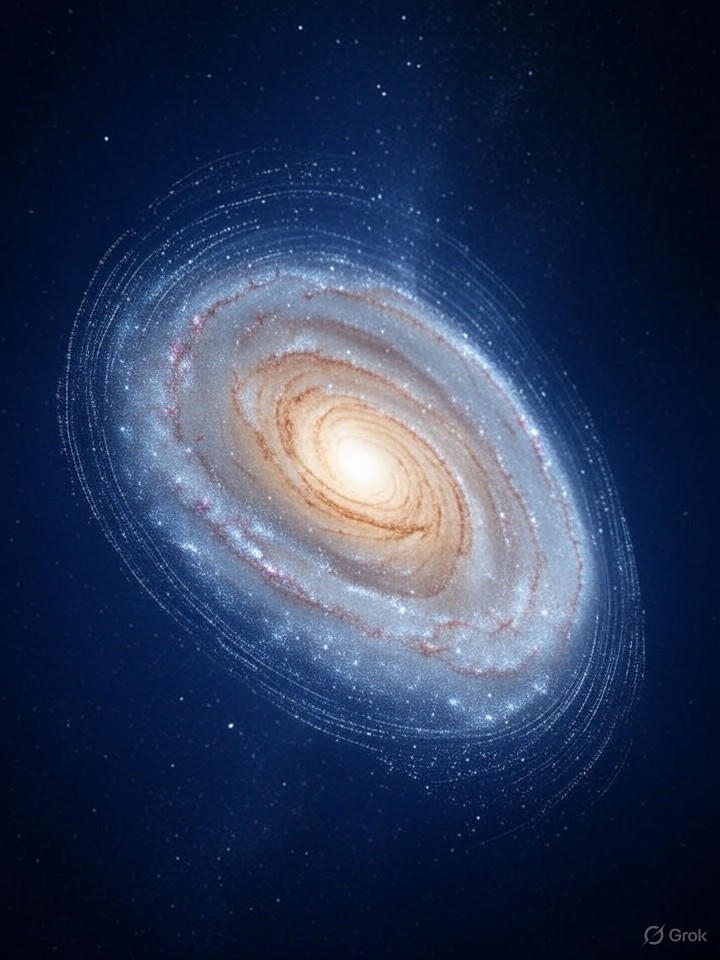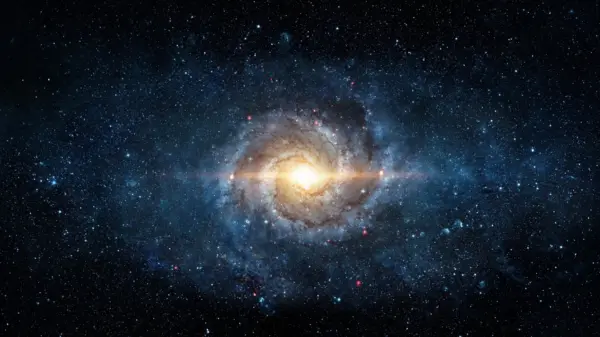Researchers have made a significant advancement in astrophysical modeling by leveraging artificial intelligence to simulate the entire Milky Way galaxy, including the trajectories of its estimated 100 billion individual stars. This breakthrough, detailed in recent publications, compresses computations that would have traditionally required 36 years into mere days, unlocking new opportunities for understanding galactic evolution.
The innovation is centered around a deep learning surrogate model developed by a team led by Keiya Hirashima at the University of Tokyo. This model was trained using high-resolution supernova simulations to predict gas dynamics following an explosion without the need for timestep-intensive calculations, allowing for seamless integration of micro-scale events, such as stellar deaths, with macro-scale structures like spiral arms, as reported by Universe Today.
Historically, galaxy simulations have struggled with computational limits, frequently treating star clusters as single particles and approximating individual stellar evolutions. The new model, referred to as a galaxy-scale N-body simulation with machine learning, overcomes these limitations, according to ScienceDaily.
Technology Behind the Development
Hirashima and his team integrated the AI surrogate into physical simulations executed on supercomputers, enabling the model to capture both galactic dynamics and fine-scale phenomena simultaneously. “This integration allowed the simulation to portray both large-scale galactic dynamics and fine-scale phenomena,” notes SpaceDaily. Previous methods often struggled to account for rapid changes, such as supernova events, due to large intervals between computational steps. The AI, trained specifically on supernova aftermaths, efficiently forecasts gas expansion, resulting in a simulation that maps 100 billion stars while incorporating smaller events and significantly speeding up processing times.
The simulation is reported to be hundreds of times faster than its predecessors, a claim corroborated by multiple outlets following the announcement in November 2025.
The deep learning model was fed data from detailed supernova simulations, allowing it to replicate gas behavior without drawing from the main simulation’s resources. This surrogate model eliminates a critical bottleneck in galactic modeling, as stated by ScienceDaily: “Their AI learned how gas behaves after supernovae, removing one of the biggest computational bottlenecks in galactic modeling.” Running on advanced supercomputing infrastructure, the simulation effectively captures phenomena ranging from spiral arm formation to individual star explosions, providing a comprehensive view of galactic structures.
Implications for Galactic Research
This ground-breaking simulation not only enhances visualization but also offers critical insights into the Milky Way’s past and future. It effectively models how supernovae influence star formation rates and galactic morphology over billions of years. According to Biztoc, “Scientists have created the first-ever simulation that models every one of the Milky Way’s 100 billion stars, using AI to run galaxy-scale physics 100 times faster than previous methods.” Researchers can now conduct investigations into dark matter distribution, black hole influences, and chemical enrichment with unprecedented precision, as emphasized by Euronews.
This tool has the potential to refine models of exoplanet habitability and galaxy mergers, which are critical for upcoming observatories like the Vera C. Rubin Observatory.
The project makes extensive use of Japan’s supercomputing resources while integrating AI acceleration. Traditional N-body simulations tend to scale poorly with particle count; however, in this case, AI efficiently manages complex subroutines. AI Daily characterized this development as “revolutionizing astrophysical research.” Validation of the simulation’s accuracy came from comparisons with observational data from the Gaia spacecraft, confirming its ability to accurately reproduce known stellar distributions while finding no significant discrepancies.
As supercomputers advance, there is potential for future iterations to simulate even larger structures, such as galaxy clusters.
This Milky Way simulation sets a benchmark for multi-scale modeling across various scientific disciplines. Researchers in fields such as climate modeling and particle physics are increasingly interested in similar AI integrations to tackle their intractable problems. Space.com predicts, “A record-breaking number of stars has been mapped by a new model that speeds up processing time while allowing smaller scale events.” Funding from Japanese grants further underscores the growing investment in AI-astrophysics hybrids, with Hirashima’s team planning public releases of the simulation framework, democratizing access for researchers worldwide.
The breakthrough arrives amid heightened interest in AI applications in science, drawing parallels to significant developments like AlphaFold in protein folding.
Challenges and Future Refinements
While transformative, the model does simplify physics in certain areas, such as magnetic fields and radiation feedback. Future iterations aim to incorporate these aspects, according to statements made by the team in Universe Today. The scalability to 100 billion particles pushed hardware limits, but advancements in quantum computing may enable real-time iterations. Observational synergies with JWST data will further refine the outputs, indicating a future where simulations closely mimic reality, thereby accelerating discoveries in cosmology and beyond.
 Meta Seeks Federal Approval to Trade Electricity for Data Center Expansion
Meta Seeks Federal Approval to Trade Electricity for Data Center Expansion Top 10 Text-to-Video AI Tools: Features, Pros, and Cons for 2025
Top 10 Text-to-Video AI Tools: Features, Pros, and Cons for 2025































































